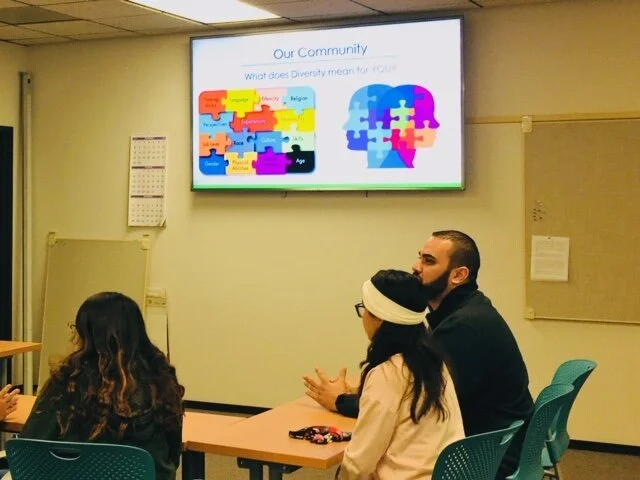Does it pay to pay? Exploring what it means to compensate outreach participants
Urban Planning Partners (UPP) has launched a Community Engagement Problem-Solving Series to explore community engagement innovations and strategies for Covid-19 and beyond. In this first Spotlight, we consider compensating community members that participate in engagement efforts.
To best understand the process of compensating outreach participants, we need to consider financial incentives versus financial compensation.
Financial incentive – a reward (or the chance to win an award) in exchange for participating in an outreach activity. Example: participants receive a gift card or are entered in a drawing to win a gift card.
Financial compensation – direct monetary payment in exchange for participating in an activity. Example: residents are paid $30 to participate in an outreach activity.
| Incentives | Compensation | |
|---|---|---|
| Goals |
|
|
| Implementation |
|
|
| Keep In Mind |
|
|
Case Studies
Oakland ADU Initiative
City of Oakland, Metropolitan Transportation Commission, and Urban Planning Partners
Background and Approach. UPP, working with the City of Oakland and Metropolitan Transportation Commission (MTC), is leading a research-driven effort to identify and overcome barriers to Accessory Dwelling Unit (ADU) development. Identifying current barriers required input from Oakland’s diverse homeowners and ADU professionals. An online survey was shared out by community groups and leaders serving underrepresented populations and focus group participants were chosen from the pool of survey respondents.
Funding. One Bay Area with $750 set aside for incentives.
Select Outreach and Incentives.
Survey participants placed in a raffle for a $100 gift card to a local vendor of their choice.
Homeowner focus group participants received a $25 gift card to a local café.
The first 10 survey participants at the Lakeshore Farmer’s Market received a free baked good at a partnering vendor from whom UPP purchased vouchers.
Results. We received over 650 responses on our survey and talked to over 30 ADU professionals and homeowners across 3 focus groups. The survey disproportionately captured white, female, and highly affluent Oakland residents, but focus group selection deliberately targeted low- and moderate-income homeowners and homeowners of color. No one requested translated surveys in Spanish or Chinese.
We did not track or measure how effective our incentives were in attracting participants. Anecdotally, people appeared to participate due to their interest in the subject matter and the incentives served as an added bonus to, not a main driver of, their participation.
See the full project description here.
2019-2020 Countywide Assessment of Fair Housing
Sonoma County, City of Santa Rosa, City of Petaluma, and Equity First Consulting
Background and Approach. The Countywide Assessment of Fair Housing needed data from protected classes and people experiencing fair housing issues. The project team used a culturally responsive, equity-centered engagement approach that compensated community-based consultants and neighborhood interviewers who were familiar with or members of neighborhoods experiencing housing insecurity to design and implement outreach strategies.
Funding. $75,000 grant from Kaiser Permanente to compensate participants and non-traditional consultants. This funding source was more flexible than the spending requirements and conditions of other project funding streams (e.g., Housing Authority administrative funds, Community Development Block Grant, City general funds).
Select Outreach and Compensation and Incentives
Trained and trusted bilingual and culturally representative neighborhood interviewers, many of whom were also members of targeted neighborhoods/populations, were paid $27 per hour to collect survey data.
Residents who completed surveys with neighborhood interviewers received a $10 gift card.
Focus group and focused interview participants (focus groups that turned into smaller groups or interviews due to Covid-19 constraints) received a $50-$100 gift card.
Focus group coordinators were typically based in the communities they were engaging with and were paid a flat fee to design and implement focus groups.
Community leaders and groups encouraged their memberships to take the online survey. The online survey did not include any incentives.
Results. The online survey received approximately 600 responses, of which 30 were in Spanish. Even without the door-to-door canvassing, the survey sample was representative of the county’s demographics. It is suspected that this is due to the involvement of community leaders and organizations in helping publicize the survey.
The project team found that participants were open about their stories and willing to be vulnerable when a culturally responsive design and facilitator familiar with or a member of the community were involved. Local government has a history of marginalizing the voices of people in protected classes and inviting public comment in very formal and bureaucratic environments. The proactive outreach to communities through respectful and trusted consultants that requested to hear participant voices in return for appropriate compensation was the first step on a long path to building real relationships between local government and community members who have not been heard. In addition, the project team viewed their work with community-based consultants and neighborhood interviewers as a way to build long-term capacity, helping community leaders build skills and experiences for future careers, community work, and other leadership opportunities.
Ana Lugo, Founder
Equity First Consulting
ana@equityfirstconsulting.com
Felicity Gasser
(Formerly) Sonoma County
felicity.lyons@gmail.com
[1]Zhang, C., Lonn, S., and Teasley, S., 2016. Understanding the impact of lottery incentives on web survey participation and response quality: a leverage-salience theory perspective. Available at: https://doi.org/10.1177/1525822X16647932, accessed October 8, 2020.
[2]Note that there may be legal issues associated with sweepstakes or raffles in some states or counties.
[3]Hsieh, G. and Kocielnik, R., 2018. You get who you pay for: the impact of incentives on participation bias. Available at: https://faculty.washington.edu/garyhs/docs/hsieh-CSCW2016-incentives.pdf, accessed July 6, 2020.
[4]4 Center for Land Use Education (CLUE), 2005. Enhancing involvement in community planning using incentives. Available at: https://www.uwsp.edu/cnr-ap/clue/Documents/publicProcesses/Enhancing_Involvement_Community_Planning_ Using_Incentives.pdf, accessed July 6, 2020.
[5]Roberts, P.J, Roberts, C., Sibbald, B. and D. J Torgerson, 2000. The effect of a direct payment or a lottery on questionnaire response rates: a randomised controlled trial. Available at: http://dx.doi.org/10.1136/jech.54.1.71, accessed October 8, 2020.
[6]Lopez, M., & Lugo, A.E. Pueblo Planning’s Guidelines for Ethical Research, Planning & Design. Available at: https://www.puebloplanning.com/approach, accessed August 2, 2020. Creative Commons License (CC BY-NC-SA 4.0), https://creativecommons.org/licenses/by-nc-sa/4.0/
[7]Gasser, F., County of Sonoma & Lugo, A., Equity First Consulting, 2020. Personal communication with Urban Planning Partners. July 10.
[8]Sauro. J., 2016. 13 things to consider when offering survey incentives. Available at: https://measuringu.com/offering-incentives/, accessed October 8, 2020.


